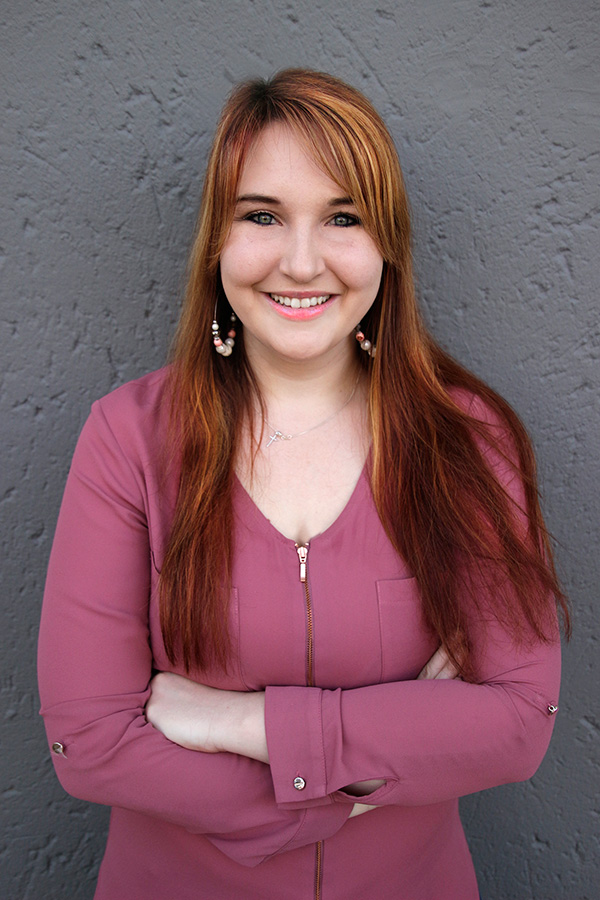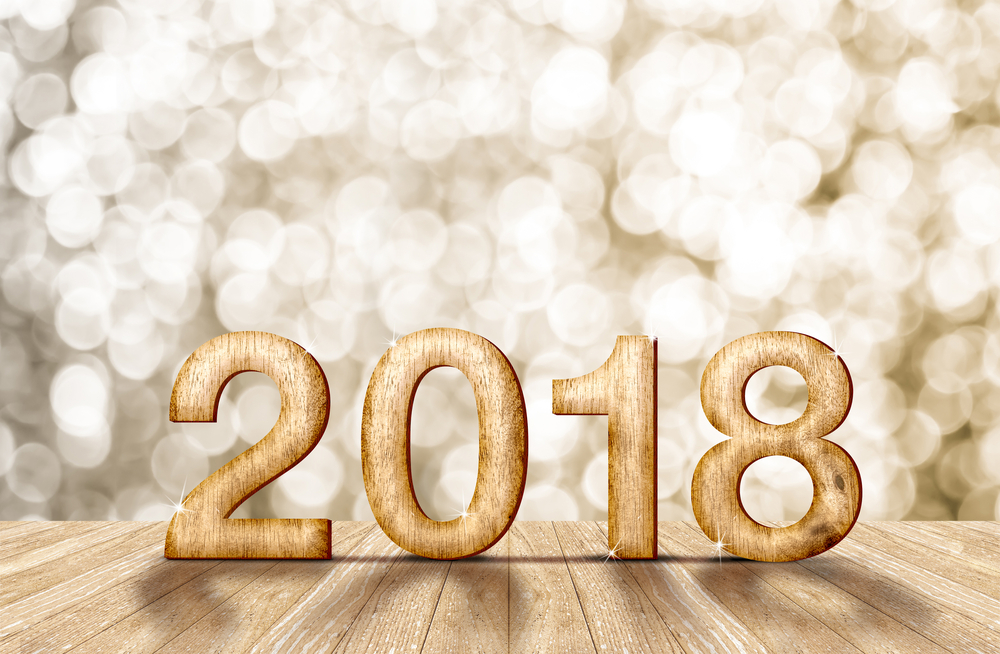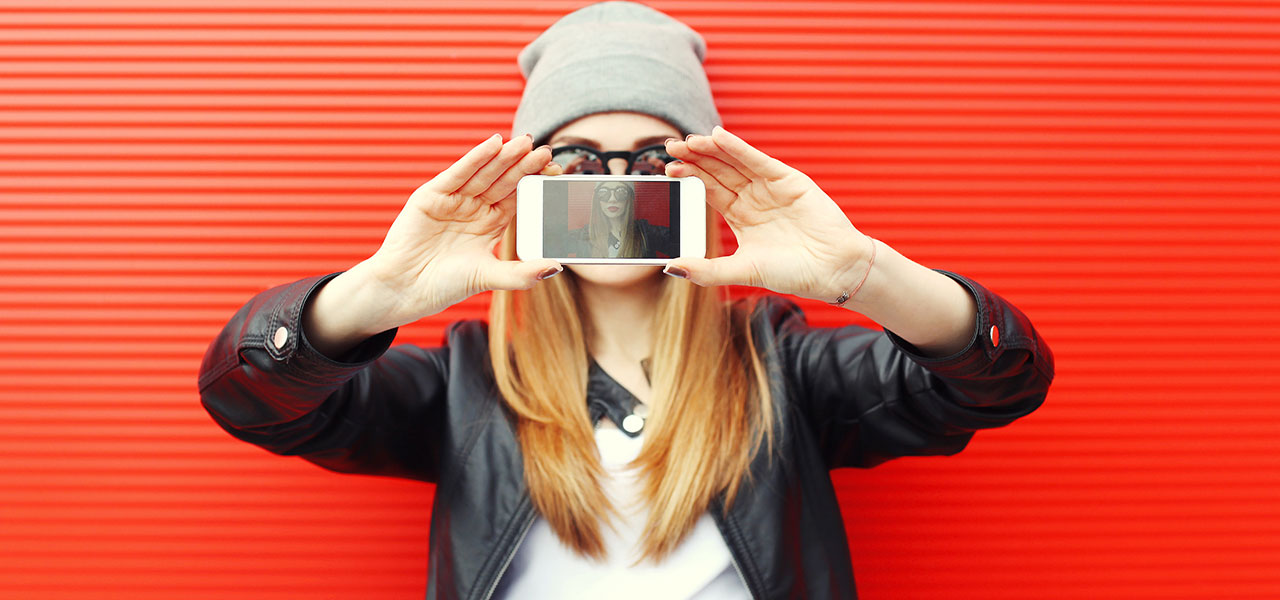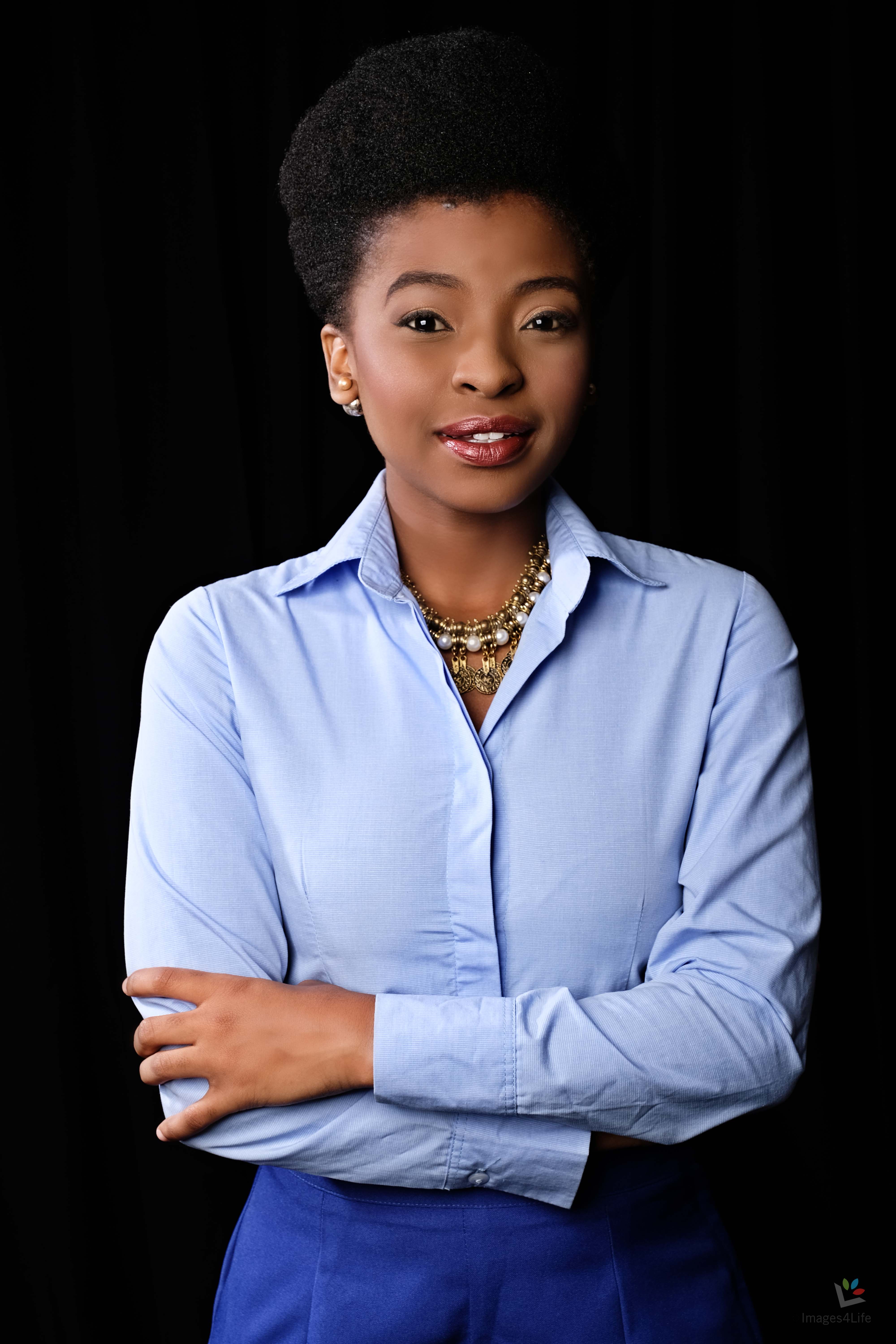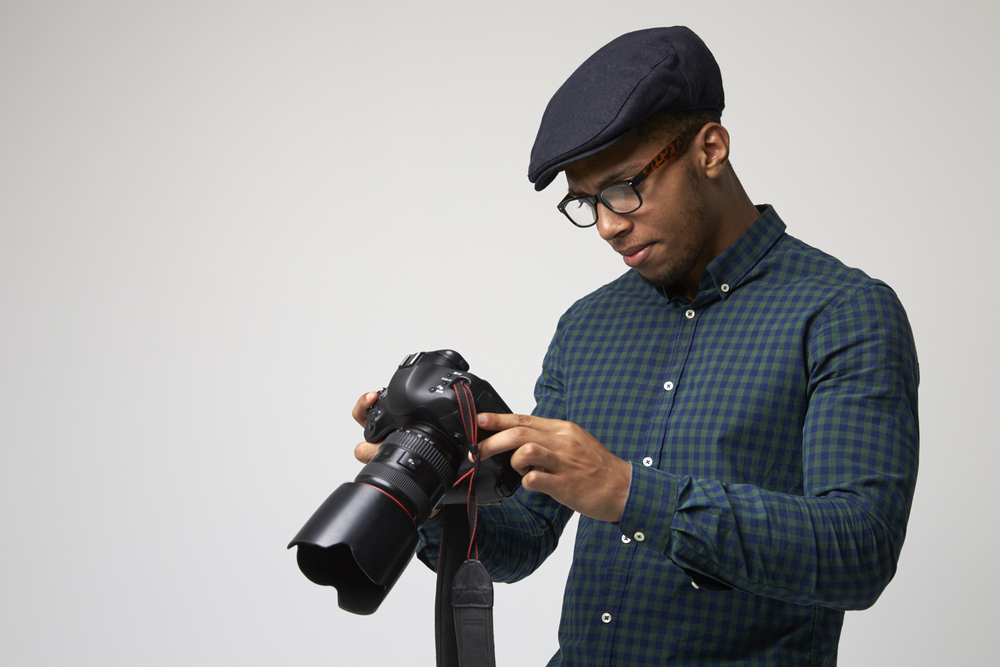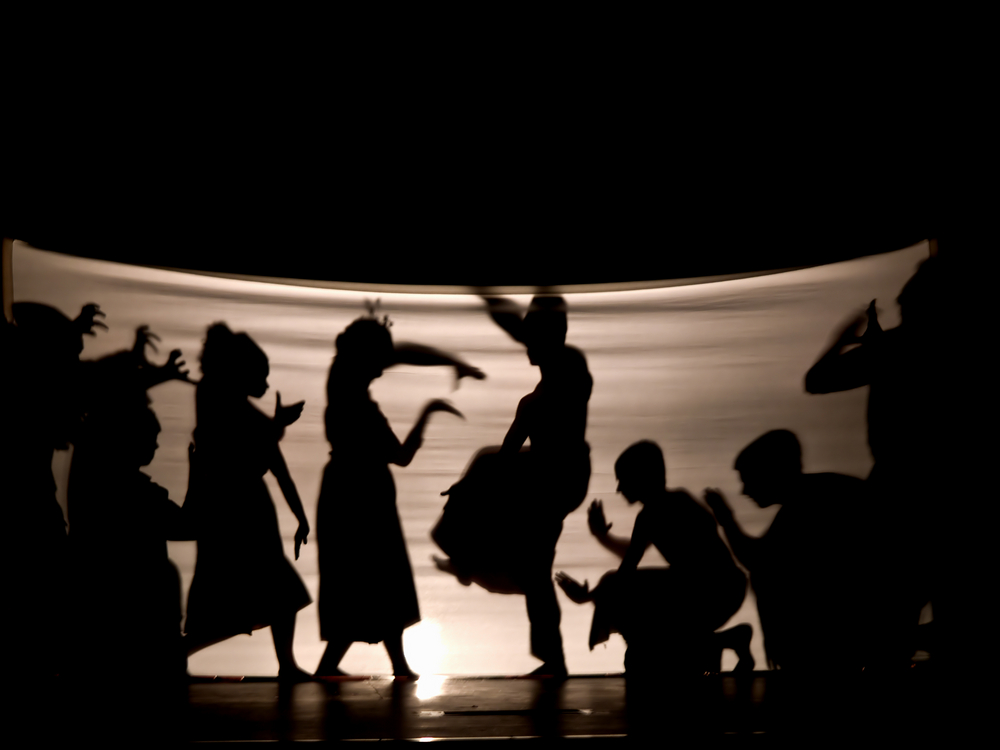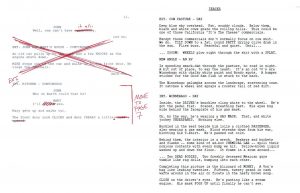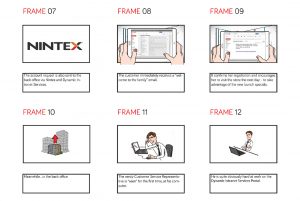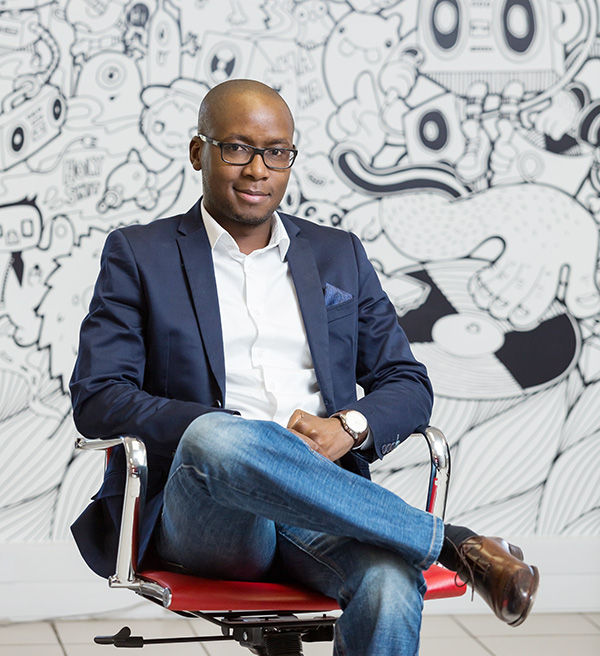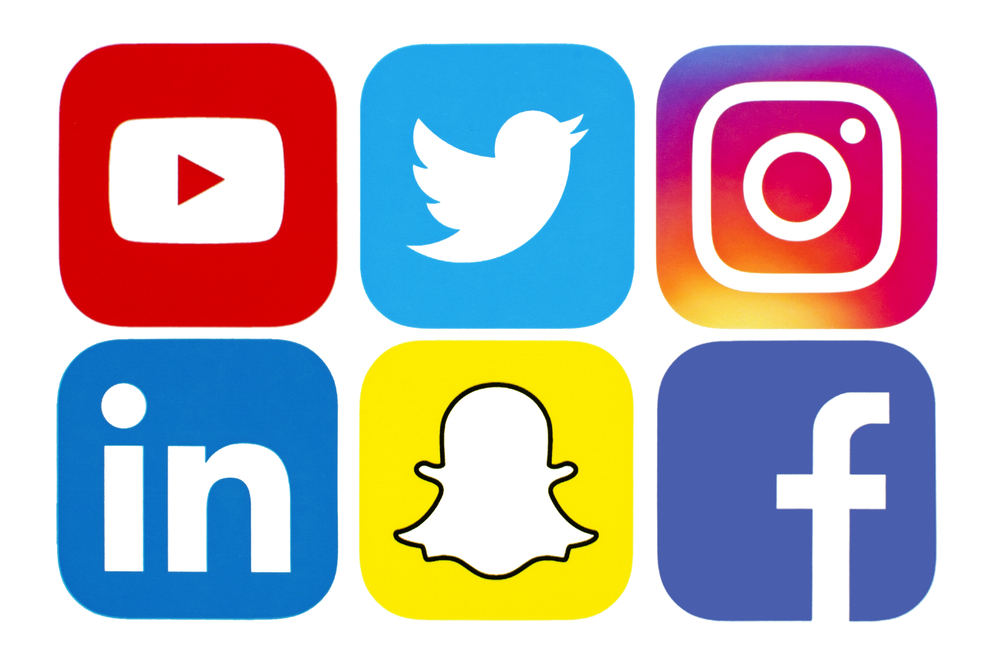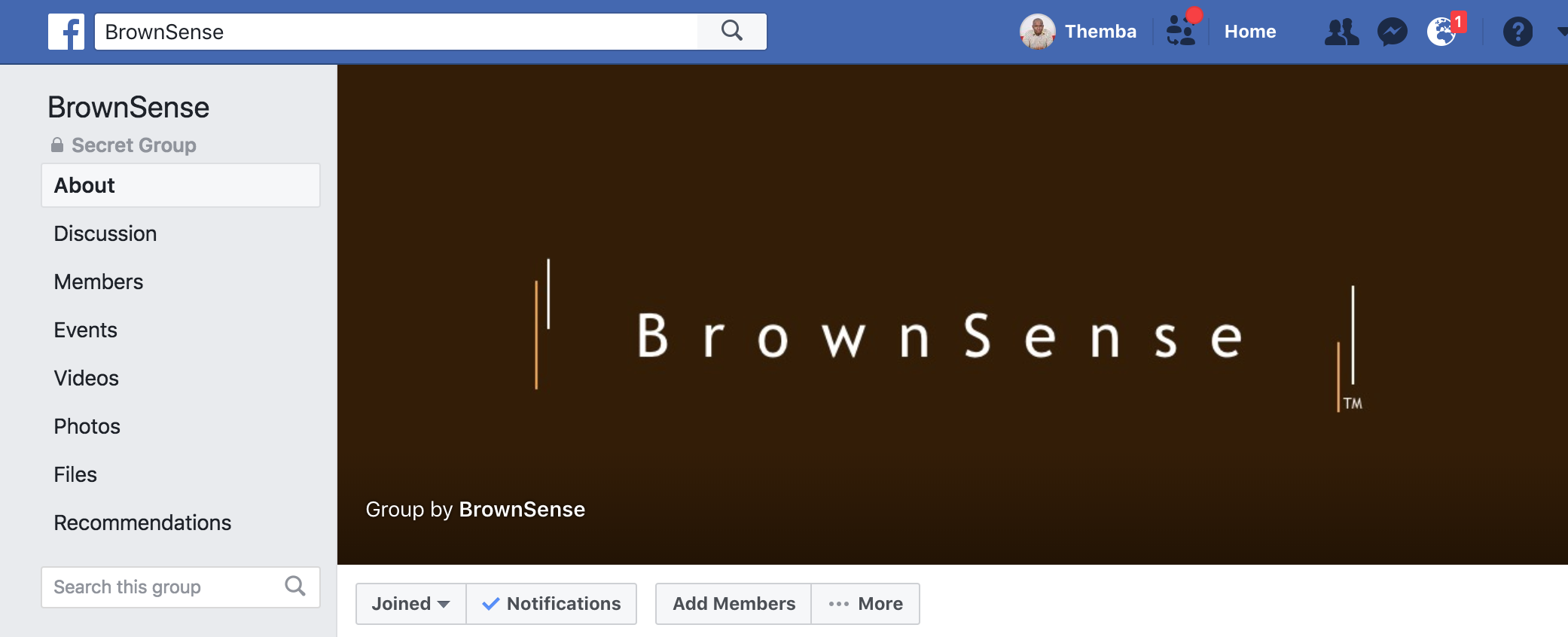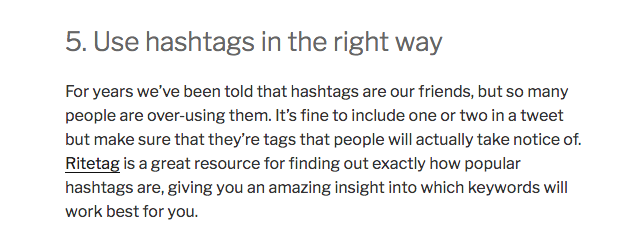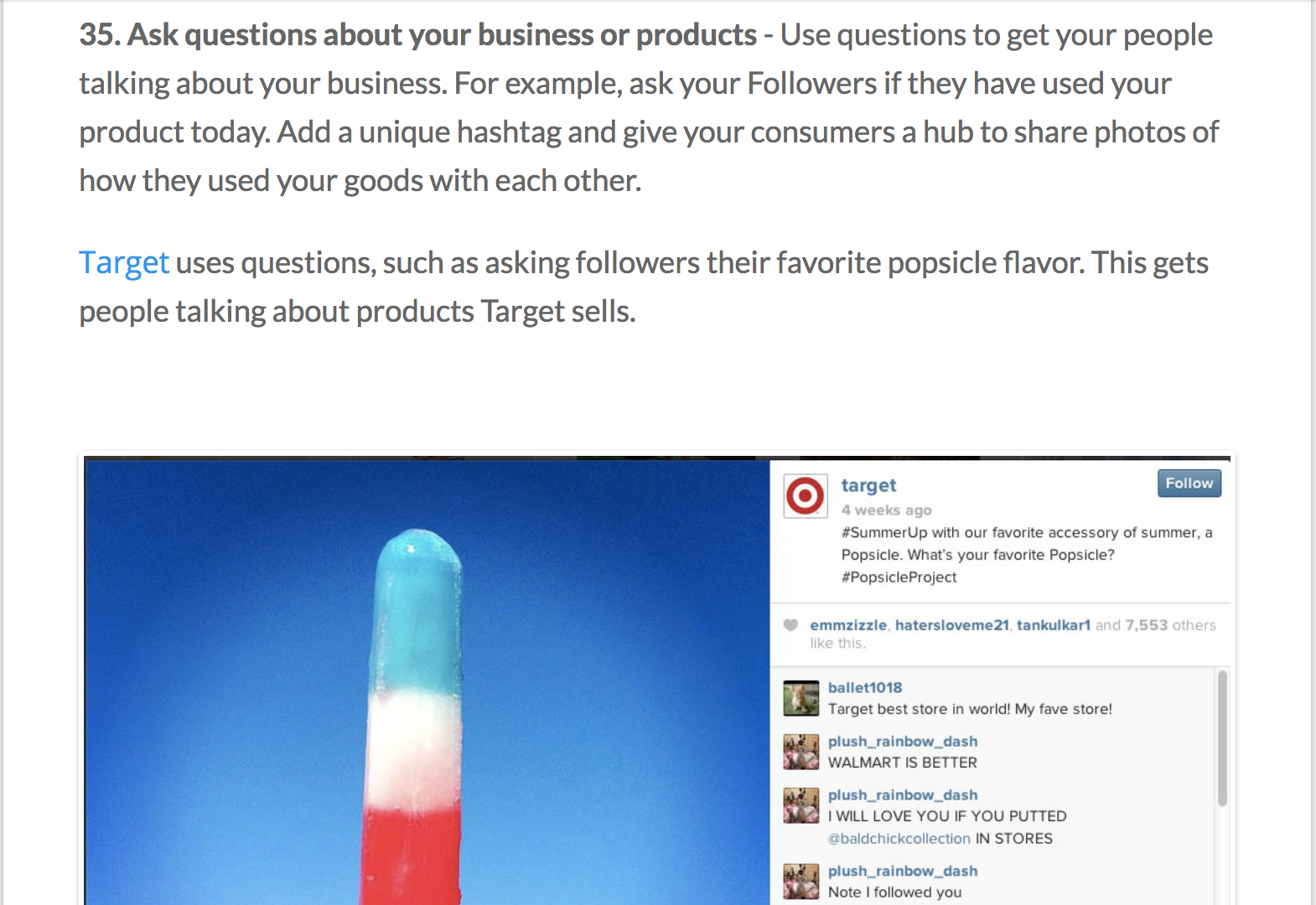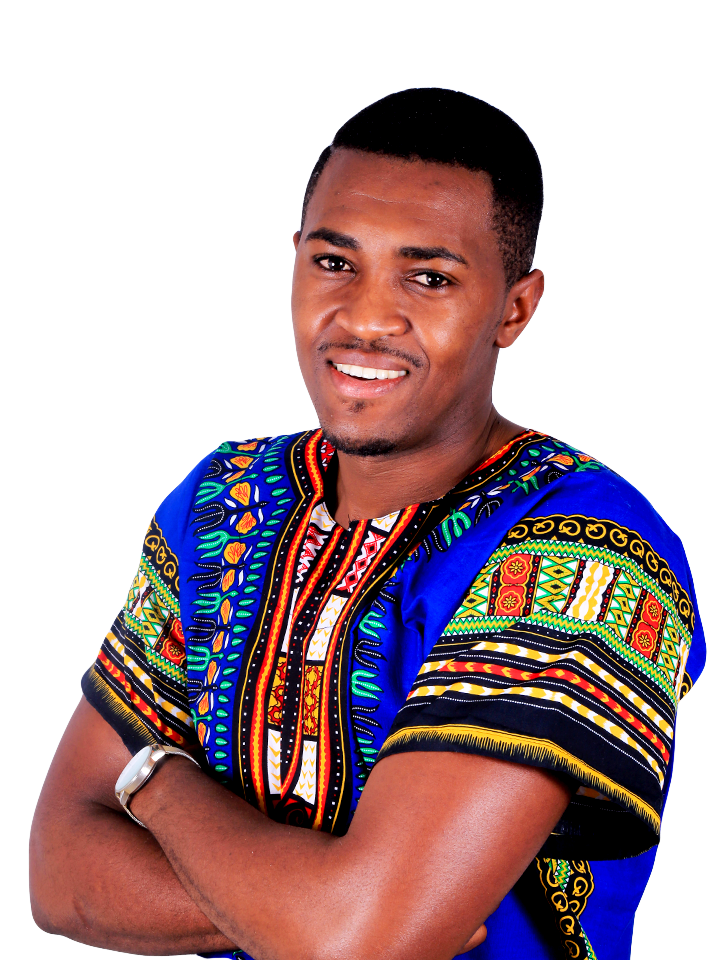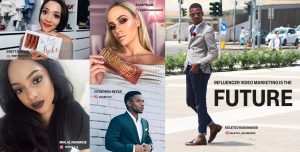Posted at 08:53h
in
Advertising
Man: This is cliffcentral.com.
Mpumi: Good morning, and welcome to “DISRUPT with Mpumi Nhlapo.” Thank you, once again, for joining us on the show. We’re gonna do things a little bit differently today. I’ve got not one, but three guests that have joined us in the studio, and we’ll be talking about the advertising, public relations, and media industry, so really the mouthpiece industries for many brands and many organizations, and talking about how their business is changing and evolving in a digitally-evolving world, and really how social media, how public commentary, how social changes have impacted on three businesses that join us today.
I’ve got with me Bongani Rosa, who’s the CEO and Managing Director of BWD Advertising. Good morning, Bongani, and welcome.
Bongani: Thanks for having me, Mpumi.
Mpumi: Thank you for joining us. I’ve got Luyanda Nene from Headliners Media Group. He’s the MD of that company, Headliners, focusing on media, outdoor, indoor, TV, so really operating the media space. How are you, Luyanda?
Luyanda: Not too bad. And you, my brother?
Mpumi: I’m very good. And I’ve got Kelebogile, who is a producer on the show, but also runs her own public relations company, KLM Publicity. Kellz, how are you?
Kelebogile: I’m good. How are you, Mpumi?
Mpumi: Great. Great to have you in front of the microphone today.
Kelebogile: Cool. Great to be here.
Mpumi: Maybe let me start with you. You know, just really, publicity has evolved over time. If I look back at when I first entered, you know, the working space, a lot of it was about public…what was it? Press releases. It was about very structured content, but it’s evolved now. We’ve got influencers, we’ve got social media, and a lot of things are happening. What have you observed over the last three to four years in your space?
Kelebogile: So before it was more traditional in terms of utilizing the traditional media space only, and now it has evolved to digital. So by the time you wanna tell, for instance, your client’s news, it’s already on social media, and somebody’s already, like, narrating the story before you. So for me, how it has changed is you have to always be on your toes. Sometimes it’s 12 a.m. and you’re, like, probably sleeping, and next thing your phone is buzzing and you look on social media, your client is trending for wrong reasons. And before, then you have…a crisis comes [SP] that you have to manage. So it has changed in that manner for me, where else before it was very traditional, very chilled. Like, we are the people that lead the story, but now the people lead the story for brands.
Mpumi: So you don’t own the narrative anymore, I guess?
Kelebogile: Yes.
Mpumi: And in effect, what we might be able to say is that everybody is paparazzi now. So everybody is a broadcast, everybody is a journalist, everybody shares their story.
Kelebogile: Correct. Everybody is a journalist, everybody is a blogger, which is the new thing where everybody who is a blogger feels like they literally have the right facts to the story, and they just publish. And that one publish button can change, like, a brand’s life, or the way they are perceived in the market. And it stays there forever because it’s digital. It’s not like a print publication where else it’s gonna stay there for, like, a few weeks or even a few days and people forget about it. When it’s digital, every time somebody, like, searches your company, or your brand, or your name, it will pop up. So that’s the risk around it as well.
Mpumi: So you’ve got far more moving pieces and parts to deal with within the business now?
Kelebogile: Exactly.
Mpumi: Luyanda, let me come to you. I think you also have a similar situation. You know, if you look at traditional media business, you were dealing with mass broadcasters, so it’s controlled in effect, and then you had outdoor, which was controlled. And so I think media has evolved as well, you know, with Facebook, and social, and all of that, everybody is a broadcaster.
Luyanda: Yeah, everybody is transformed basically to the digital space because that’s probably the most pivotal thing that’s come out in the 21st century. It’s changed most of the media industry, purely because historically it was very easy to just…for example, if you’re in the media space and you’re planning media, it would be a very simple plan, like a TV, radio, you know, outdoor. However, now, because of the Facebooks, the Instagrams, you know, all the bloggers, etc., it’s completely revolutionized the way people communicate and how people consume media, and how the media owners or the media buyers are now buying media.
Mpumi: And with that change, has it required a change in the skill set that you have in your organization, or is it really been about, you know, trying to do the same for as long as possible?
Luyanda: No. I think it’s just about integrating it into your company, because…I mean, it’s not something that traditionally we had, and now that we do have it, we just have to evolve in that and just get someone that has the skill set in terms of the digital migration, in terms of the digital strategies, etc., only now we are having to get those people involved into our companies and let them give us that direction in terms of where we’re going in the digital era.
Mpumi: And then if I talk about social media being obviously a big driver, a big burner of revenues for many companies from a media point of view, how is that impact at the traditional media businesses? Is there an overall increase in media spend, or has there been a move to more the social media and the digital media platforms? What have you seen?
Luyanda: No. I think there’s been a sense of, you know, people need to balance things out now. It’s no longer just about your normal traditional stuff, which is your, you know, outdoor, TV, radio, etc., and newspapers, but now it’s just a matter of merging the…I’d say the advertising elements. So the social media element has to be included in your overall strategy now, because if you’re not in there, your brand is pretty much lost in the thick of things. So, yes, it has, you know, increased the elements of media, which is social media, but, to an extent, you cannot go without any of the social media elements within your company, because your company will just be lost in the clutter.
Mpumi: Yeah, okay. Bongani, you’re…I mean, BWD is an advertising company, so you focus predominantly on creating the content, whereas in the media space, they’ll be placing your content. You’ve had to adapt the way that you conduct your businesses or the type of content that you create. What has evolved in your space?
Bongani: I suppose content creation has always been important, and still is important. So I wanna say it’s an evolution per se. I would say it’s more of acceleration of content creation, if you wanna put it like that. Let me make an example. It’s not a client, but this is just something that I’ve been observing. Let’s take…Range Rover just came out with this new car, they call it the Range Rover Velar. What they’ve done is that…I think Velar came out, if not last month, two months ago, but what they’ve done is that they’ve created tons and tons and tons of content around the car. So they’ve created content around the safety features, around the style, around this and that, and that, and that, so that if you’re looking for information relating to this car, you’re able to find it. In fact, they even took it a step further. What they’ve done is that…so they would push out ads on Facebook, and then after putting out ads on Facebook, it takes you to their website, and then after you go to the website you get a cookie that goes on to your website. That’s called retargeting. So every time you go onto YouTube, you’re always seeing Velar ads.
So I suppose what I’m trying to say is that they’ve created tons of content to convince you that this car is the right car for you. In fact, now as we speak, if you go to YouTube and you search for “Range Rover Velar,” you’ll see more than, it’s about 102,000 videos there, but the car only came out, I think, in SA, last month, if not two months ago. So content creation is super-super-important.
Mpumi: And how has that led to change? Because I’m gonna assume the type of content…and I know for myself, what I would be comfortable to consume on television vis-à-vis on a billboard and on social media is quite different, and I reacted quite differently. So how has that…which is why I meant an evolution. How has that changed in terms of the way that you need to create content [inaudible 00:08:48] apply to all these mediums?
Bongani: I suppose it would depend. So if they’re creating, like, a short ad for YouTube, then that one will be slightly shorter, like more of a snackable content type of piece of content. So how the whole thing is done is that they start you firstly with piece of snackable content just to catch your attention. After they catch your attention, then you can do, like, a deeper dive where they take you into the different features, that, “This thing has 22-inch rims, has this fancy doors, and XYZ.” So it’s pretty much…how do I explain it? It’s more like they take you through the sales funnel. From the discovery, they know that that’s the difficult part, but to push you down the funnel, it’s not a problem.
Mpumi: Okay. Kellz, let me come back to you on this conversation. In terms of brands…and let’s talk a little bit about personal brands, we’ve seen really an upsurge in the number of people wanting to have personal brands, and it seems to be linked, I guess, to social medium in quite a significant way, even to the extent that even a large automotive brand, or whatever, would want to associate themselves with certain personal brands. What’s driving that?
Kelebogile: I like that he mentioned the Velar, because I started seeing a lot of people that, you know, claim to be influencers driving the car. So when they launched, after creating all that content, they went and picked a certain few individuals that have numbers on either Facebook, or Instagram, and Twitter, and gave them the car for a few days, like a weekend. And you see all these people that most people look up to drive these cars, and obviously you’re gonna wanna go and purchase that car easily.
Mpumi: Or find about more about it.
Kelebogile: Or find out more about it, and that’s where it takes you back to their website, their page. So people creating their own personal brand is a new norm, to say, because there’s money in that market, because some brands take it as you are…well, the message is delivered authentically rather than panted through media platforms. So most brands are deviating and driving their strategies towards that market where they identify certain influential individuals, not really famous, but influential in terms of numbers on their social media platforms.
Mpumi: Can you just elaborate a bit where you said “not really famous, but influential.” What makes them influential?
Kelebogile: Maybe the topics that they talk about on their platforms. So if you are somebody that loves cars, and that, you know, researches on cars, and people follow you for your content…so it also goes back to content. If you’re a fashion person, a lot of people want to know what’s in, what’s out, you know, so they will follow you for that. So it depends on what you really talk about on your platform that drives numbers, that drives people to gravitate to following you or being interested in what you say, and they listen to what you say in a way. It’s like they’re a new celebrity, but you’re not really on TV, or radio, or, you know…
Mpumi: Or traditional media.
Kelebogile: Or Traditional media, yes.
Mpumi: But that then affects your business, Luyanda, because if broadcasting is moving to more social media platforms, and if traditional celebrities, if we understand them, are not necessarily the only influencers, it creates a challenge in terms of when you do your media planning around, you know. How do you then package offerings for your customers? Does it not?
Luyanda: No. I think it actually complements each other, because not only do you have your above-the-line stuff, which is more mass media, but if you merge the above-the-line mass media stuff with your influencers in the social space, then it creates a more holistic kind of approach, as opposed to looking at it from a linear perspective. So for me, I think that it’s actually enhanced the way in which you can engage with brands, and how you can access them from, you know, above-the-line, right down to below-the-line, and online. So usually how we would plan our strategy is more on a 360 approach where you’re going online, below the line, and above the line.
Mpumi: Yes. But then the question I’d ask is, if I…and whether or not these are correct figures, but if I were to look at social media, you know, whether it’s YouTube, or Facebook, whatever, you can kind of get a good sense of who’s seen your content, you know, because it’s quite measurable. And we’ll talk a little bit about, you know, fake accounts, ghost accounts, etc., but let’s, for now, assume that it’s more measurable, and you can get a good sense of who’s seen it, what their profile is, their demographic information, etc. But, you know, in terms of the traditional mass media, it’s very difficult to quantify the audience.
Luyanda: Yes, it’s still…it has been a challenge for many years. And I think previously, you know, when you look at the media planning tools and the media planners themselves, traditionally it was very easy for them to plan, because they were only planning to a certain market. However, now that the landscape has changed, and now, you know, there’s a much broader market that people are now trying to reach, it makes it a very big challenge for the media planners because they have no idea how to plan on other mediums that reach a certain type of demographic, because…and I’ll put it bluntly, traditionally the media landscape is very white-owned.
So when you look at the media planners who are planning for the brands, there might be brands that are targeted at the black market, for example. That poses a challenge on its own, because the planners themselves don’t understand the environment in which the market resides in. So now they’ll only go for things that are known to be reaching a certain audience. However, missing the whole point that there’s another complete portal that they can reach that particular audience, as opposed to…okay, if I know I’m a BMW and I wanna advertise to, you know, LSM 8-10 suburbia kind of guy, you know you’re gonna go on, for example, M-Net, you’re gonna go on, you know, BBC, etc.
However, if you’re trying to reach another demographic, there might be… “Am I in the right plan? I might not know that there’s actually Mzansi Magic.” You know, they have no idea about what the content is on Mzansi Magic, they have no idea what’s happening on Black Twitter, for example, they have no idea what’s happening on the Instagram, and what’s popular there, and what’s the popular culture. So when planning around that, it becomes very challenging for the media plans, and hence it’s always good to have, you know, the other eye where you’re getting Kellz, for example, who will give you those insights and tell you that, “No, actually this is where the market resides. These are the platforms that they’re consuming, and this is how you should be integrating your media mix into this particular sector or digital platform.”
Mpumi: Absolutely. In fact, and that’s where, Bongani, I wanna kind of talk a little bit more then about content, because as much as we understand it around kind of racial diversity in terms of the people that own the media, but there’s also an intergenerational aspect, you know. So what we’re accustomed to consuming in terms of content, if I look at my nieces and nephews and how they consume content, it’s very different, and if you’re gonna be producing content, whether it’s advertising, or whatever the case might be, you’re gonna kind of have to have a different mindset in approaching that.
Bongani: No, I totally agree with you. If you remember then, Kellz spoke about influencers. I think it was you that started the conversation around influencers. Influencers create content [inaudible 00:16:57], just that maybe the quality of their videos is not as good, or maybe the quality of their images is not that good, but what they’re doing is that they are creating content in their own right. So…because if someone is going through, let’s say, their Twitter or maybe their Instagram, and then they’re checking an influencer profile, they don’t necessarily see it as an advert. So it’s more believable. So that’s why I like big brands that would go for that type of content created by influencers, and then they would go to different production houses, ask them to create content for them. Besides the production houses, what they would then do, they would go to…I’m not sure what you’d call car reviewers, but I suppose they’re influencers in their own right. So your…I don’t know what these cars [inaudible 00:17:51]. But they would go to those guys and say, “Hey, here’s this car. Can you please review it?” They know that those guys have good cameras and nice production facilities.
So it’s just creating…not…it’s creating content that does not look like adverts [inaudible 00:18:10].
Mpumi: And where’s the space then for an advertising…a traditional advertising agency within there? Where’s the space then just to, I guess, do business?
Bongani: An advertising agency will be in charge pretty much of everything. So they’ll be in charge of finding the different influencers, making sure that they’re creating the right type of content, collaborating with guys like Luyanda in terms of their media planning, and then creating content that’s more like advert type of content, and then also creating educational content, because if you look at the Velar example, the bulk of the 102,000 videos that are sitting on YouTube, they’re not necessarily sales type of videos, but they are more educational content to say, “This car can do X, can do Y, can do Z,” and it just helps you kind of fall in love with the car…with the content that you consume.
Mpumi: And I guess, you know, you trust it more if you hear it from an influencer. So if you hear it from another ordinary person who says, “This new mobile device or phone is really cool or is really good, you should check it out,” as opposed to if it’s like a salesperson from one of the big mobile…
Kelebogile: It looks like an ad.
Mpumi: Then it looks and feels like an ad.
Kelebogile: Yeah.
Mpumi: But why do we feel the need for that? Why do we feel that…? You know, why has that evolved? Why has that change come about?
Kelebogile: Because people are looking for a personal touch. People are looking for an authentic touch. People are looking for something they can relate to. Gone are the days where you just see something on TV and you believe it. Hence you’d mentioned fake news and mentioned, you know…I don’t know.
Mpumi: Fake accounts.
Kelebogile: Fake accounts, and ghost accounts, and all of that. So people want something that they can relate to, something that they can be, like, attest to, “That person has…well, drives this car. I also want to drive that car,” especially with somebody that they look up to. And I’m gonna go back to what you’re asking [inaudible 00:20:15] now and Luyanda, is that at the end of the day, the whole aim for a brand is to create a positive perception around anything that they’re working towards, so you still have the content that…traditional media, and you still have the influencers. So you really wanna give it the 360 approach rather than just 180 traditional approach. So you still need to affect it to all the elements.
When I’m driving down the highway, I still wanna see that billboard that says, “T- Systems,” you know, and “outsource,” [SP] and all of that, and I when I go on my social media, I still wanna see you active in a way. And it pants that perception, and it creates that credibility in my head that, “Actually this brand is doing the right things.” And when I see more people talking about it authentically, it means that the message is, you know, sent across. That person believes in that brand. I can also, like, tap into that brand and see what they’re doing, if it’s something that I like or something I want to be a part of.
Mpumi: So I want to talk a little bit then because what I’ve seen the influencer is a big thing is about your image that you portray on these various platforms, and that’s given rise to, like…I call them social media photographers. It’s like a whole…and certainly they do good work. But isn’t it interesting how a shift in dynamic when the media space creates new opportunities and another space, you know, photographers are now celebrities in effect, which…I mean, we’ve always had celebrity photographers, but not on this scale and volume.
Kelebogile: Especially in South Africa.
Mpumi: Is it particular to South Africa? Why would that be the case?
Kelebogile: I guess people want good pictures, you know. With photographers, you want BW to believe you and be like, “Oh, we want to work with this guy. We don’t have to do much anymore. We’ll just collaborate, and give them content, and give them the messaging, and then they just run with it. We don’t have to give them equipment. We don’t have to invest much into it.”
The other thing where social media is creating, you know, work essentially for people. Funny enough, I was talking to one of the bloggers a few days ago, and she was telling me…so I’m like, “Oh, your pictures have improved. You know, are you still taking them with your phone?” She’s like, “Yeah, it’s still my phone, but the trick is there’s now an Instagram, you know, tutorial workshop.” So I’m like, “What?” She’s like, “Yeah. You go to this workshop and they teach you how to take pictures if you’re a foodie, if you’re fashion, if you are automate, or whatever. They teach you how to literally take pictures, and how to angle your shots, how to message…or, you know, capturing your pictures, and all of that.” So, you know, social media is doing things that are beyond us. That’s why if you don’t tap into it right now, the bus is gonna leave you behind. That’s it. You’re gonna miss the bus.
Mpumi: Luyanda, you’re nodding your head.
Luyanda: Yeah, I know. It’s just interesting to watch, because if you look at, you know, pre-’94, for example, and you look at how the content has been generated previously when there was actually not much content, and now you’ve got an influx of visual arts kind of stuff and visual content. I mean, you look at the amount of people that consume social media, and if you look at the literacy in this country, you’ll know, for example, people are no longer looking to read a whole story, a whole paragraph. You need to give it to me in punchy, you know, 10 words, whatever it is, make your point, make it clear, let me move on to the next thing. So it’s completely driven a new sense of, you know, psychology, for lack of a better word.
Mpumi: Yeah. And…and this is an open question, but that then brings me into the topic of fake news. Yesterday I was sent some stuff on a WhatsApp group, and the first question I asked…it was a series of images around some protest marches, and the first question I asked was, “How sure are we that these pictures are from today?” [Inaudible 00:24:26] I mean. And that speaks [SP] a little bit editorial, because while I can see clearly the benefits of social media, and citizen journalism, and giving everybody a voice, there’s also the risk that we lose sight of the true narrative, if you know what I’m saying. So if someone posts a picture of something that happened in 1994, and I consume it as something that’s happening today, it can paint a real different story about the reality. So where does this, you know, advent of what’s real and what’s not, and what’s fake and what’s not come into play for brands and companies that are trying to engage social media and also…? Because you want to do that to build trust, but building trust in an environment where there’s a lot of things that may not said to be true becomes a challenge. How does that play in the…? Kellz, on your side?
Kelebogile: You know what? The thing is individuals, like I said, are now narrators of the story. Remember that billboard, that guy? I think it was Selsi [SP], and they didn’t pay [inaudible 00:25:25]. I can’t remember what it was, and he created a billboard, and that created this whole, you know, disruption, and cost Selsi to jump and move, and there was another MiWay incident off the email which was fake. So it’s just personal, you know, ways of people pushing their own messaging.
I saw the march pictures, and I asked myself, like, which ones are true and which ones are not? We are all not there [SP]. Next thing it’s on the highway. Next thing it’s, like, you know, there’s field, gravel. So which picture is the real picture here for today? And also it just…it took away the messaging of what was meant to be yesterday, the real reasoning around the march. And it goes beyond with every brand. When you are trying to, you know, deliver a certain message and somebody doesn’t believe in it or doesn’t want you to deliver that message, they will try many ways of disrupting that message and changing the narration of it, and most of the times through social media, they win.
Mpumi: Yeah. Bongani?
Bongani: Yeah. I think fake news is definitely not going anywhere anytime soon. So how I see it is just negative PR that obviously maybe your competitor or maybe someone that doesn’t like your brand will always be pushing. But it’s up to you, as a brand, to then counter that negative news or negative content with your own content that tells your own story, because, like Kellz was saying, people are able to…so now people have become celebrities unintentionally. If we were to use a simple example, we’ve got our Minister of Police who’s arguably a celebrity on Twitter, we’ve got Julius Malema. He’s arguably a celebrity. In fact, Julius Malema just made our lives interesting a couple of weeks ago when we retweeted something negative about one of our clients, so we needed to do something about that. It was not necessarily fake news, but it was negative PR that needed to be countered. So brands, what they need to do is that they just need to kind of react quickly with content that counters the negative PR or the fake news that’s going to consistently be coming up, because negative PR is not going anywhere, fake news is not going anywhere.
Kelebogile: I’m going to tap into that. It’s been a challenge that I’ve observed, is that even as consumers and people, they are to consume negative news. And give them the positive news, give them the real truth, they’re no longer interested. So that’s also the other challenge, that as much as we can put it out there, it’s good to still, you know, retract and put out the real truth or the real facts about the matter, but always know that people, they love consuming negative news, and anything negative, they’ll take it and make it trend, but when it comes to the positivity around that same topic, they’re just like, “Okay, cool,” and then they leave it there, and it’s not gonna…the real truth is not gonna trend anymore, because it’s not interesting, it’s not…
Mpumi: It’s not exciting.
Kelebogile: It’s not exciting.
Mpumi: But that’s why I’m asking, because media advertising PR is about helping brands position themselves, whether it’s to sell a product or to sell a lifestyle, whatever the case may be. So if me, seeing something, I’m already questioning how true this is. You know, “Which…where are these pictures from? Are they true or not?” It’s also gonna then impact how I perceive brands on those platforms, and I guess that’s the question I’m asking, is, how do brands engage an environment where there starts to become a lot of distrust? You know, so it’s starting, now, you had those questions, I had them, as probably millions of other people that had similar questions, and brands are trying to weave themselves into those narratives, into those spaces. The risk is that then they might lose the trust in that space, or is that not the case? I mean, what do you see coming out of that?
Bongani: Well, for my side, I think we…I mean, brands need to consistently create content that tells their own story. Say, for argument’s sake, if I were to use the Velar example again, if someone came out and said the car does not…I mean, the car is not safe, or maybe just something faulty with the steering wheel, whatever, there’s content already out there that would counter that negative story that someone would be trying to tell. Fair, the negative story will probably gain traction quicker, but, in time, people will see that this thing is total fake news. So brands need to consistently create content that tells their own story.
Mpumi: Let’s take the opposite of that. Someone says something which is supposed to be positive. So maybe they say that it can reach a top speed of 300 kilometers per hour, and that becomes a trending story. It would be something that would entice me to be attracted to that brand, which then turns out not to be true. You getting me? So I guess there’s also that other side of the coin where now I’m like, “Have you seen…?” And then it spreads like wildfire, “This is an amazing SUV. It can achieve these insane, crazy speeds,” and then that starts to trend or gain a lot of traction. So how do you deal with that scenario, because that’s not as easy as countering something which is factually…or it’s also factually not true, but it’s also an interesting dynamic, let’s you sit within that space?
Bongani: As much as it’s not a negative story or negative PR, you’d still want to put out your story out there to say, “Our SUV can’t reach 300. It can only go up to 200, or something like that,” because otherwise if you try to ride on that wave, then you’re going to have a problem.
Mpumi: So the truth, in essence, is still a key…must still be a key driver?
Kelebogile: And also you need to be the leader of your story. I think the reason why they can have the backup of the content is the fact that they’ve already put out this much content, they’ve already invested in, you know, even getting those influencers to talk about the reality and the truth around the brand, because essentially when you have, like, 20 people or 10 people that you’ve given the car to to test-drive, you tell them, “Listen, this is a key messaging around the car. This is what I want you to communicate about this car. This is the review that I want from you.” You kind of like shape the narrative. But if it’s an external person or a consumer, there is nothing you can do. All you have to do is go back to the real content and the real facts about the car, and that’s the only way, unless if you are a Nando’s and make a joke out of it.
Bongani: And also just to add on the Nando’s stuff, so every time something happens, Nando’s comes up with a nice meme, but sometimes Nando’s says, “This meme was not done by us.” As much as the meme would be brilliant and amazing, but they say, “Hey, this one’s just too…we didn’t do this thing.”
Mpumi: Okay, so they’re honest about what’s happening within their space?
Bongani: Hundred percent.
Mpumi: They own what part of the narrative belongs to them, and they give credit, I guess, to the [inaudible 00:32:47]?
Kelebogile: Yeah.
Bongani: Hundred percent.
Mpumi: Okay.
Kelebogile: And probably, like, the consumer will want that verification from Nando’s, like, “Is this really you guys?”
Mpumi: And I guess, I mean, the fallout could be extreme if the real creator of that content would come out and say, “They’re stealing my ideas,” or something like that. I mean, given that everybody now has got a very big voice and they can express themselves.
Luyanda, let’s talk then about how is technology impacting on your business? I mean, we’ve obviously talked about the changing nature of media, but I do know that technology is playing a role in some of the traditional media spaces to, I guess, help them to become more in tune with how people want to consume content, or how advertisers want to measure success of campaigns? What are you seeing in your space?
Luyanda: Well, there’s a lot of developments. When it comes to the digital integration within the media space, I think…for example, if you look at the likes of your DSTVs, or you look at your outdoor companies that are constantly looking to, you know, show return on investment for their clients and their budgets, etc., and with digital, that’s thrown in a completely different span, because now clients are becoming more vigilant, they’re becoming more conscious of what exactly is happening out in their market, and they’re also starting to be more in tune with their consumers and what their consumers want. So if you look at, you know, TV, for example, with the digital migration, people are now viewing television in 30 different ways as opposed to a few years ago. If you look at the way we consume outdoor, it’s very difficult for outdoor companies, for example, to measure how many people actually see their ads. However, with new technologies, there’s products out there in the market, from a global perspective, but people are not in tune with it yet, or they’re not in the country.
Mpumi: Like products that do what?
Luyanda: That basically measure and give you more tangible research as to what your consumer is viewing, what they’re seeing, you know, where exactly are they? In order for me to be able to say, “Okay, let me put…me as an advertiser, put my money on your platform.”
Mpumi: Okay. And where do you see the future then for outdoor? Is it gonna be more of the digital screens that we see? Is the static space gonna grow? Or what’s happening? What are you seeing currently in that space?
Luyanda: I think the static space is oversaturated, and also it’s become…there’s a lot of clutter at the moment, so it’s very difficult for you to be spotted amongst every other brand, every other billboard that’s out there. There is street pole ads, there is massive gantries, there’s…you know, 6 by 12, or whatever it is. So there’s different sizes of messages…
Mpumi: That are coming at you all the time.
Luyanda: That are coming at you all the time, so you are constantly being bombarded by all these things, whereas if you look at the digital space now where people are now going more digital, that content doesn’t only have to live in one place. So I can literally take my two-minute commercial, or 30-second commercial, or whatever it is, and leverage it onto other platforms, on, for example, social media, or on my TV campaign, or whatever else, whereas the static doesn’t really give you, you know, that impact that it used to. And it still has a place in the market. However, I think, with the new planning tools, with the new measurement systems that are being put in place, and, you know, with clients wanting media owners to be accountable, you know, that is giving the industry more credibility, and it’s giving clients more bang for their buck.
Mpumi: And do you see there being a lot of investment in technology to kind of drive and evolve the industry?
Luyanda: Definitely, absolutely.
Mpumi: Okay, thanks. And then, Kellz, the question, I guess, on your side is, given that we still have the mass media, you know, we’re still gonna do billboards, we still have TV, we still have broadcast radio, etc., these influencers that, I guess, emerged from the underground, if I can call it that, are they now moving to become mainstream celebrities? Is that the direction they’ll move, or people still wanting them to remain almost like [inaudible 00:37:35]?
Kelebogile: People still want them to remain there, because at the end of the day, they’ll ask you questions like…which is a question that’s been asked to, like, the likes of Kim Kardashian all the time, “What is your talent? Why are you famous? You know, Why am I consuming you so much?” They have managed to maximize it to the max. But in South Africa it’s still very new, and people are still adapting to it, and people still want to understand that…they still want to take you as just the normal person they’re following, that they just love their content, and that’s just it.
Yes, some of these people, they’ve moved and shifted into, now you’ve seen them as presenters, you’ve seen them as, you know, doing commentary stuff or shows, not really presenting their show, but they’ll be asked to come in to do a commentary on that specific topic that they usually talk about. You see them in some soapies and stuff. It’s because, also, the casting director wants that piece of the numbers that that person has. So they are moving into becoming celebrities, but it’s very slowly, and you need to do it very smart, and you need to have everything, like your whole package, put together before you can literally, like, jump and go into that other side.
I’ve seen bloggers and influencers that have, like, PR managers, that have, you know, social media managers, and you just ask yourself like, “But aren’t you supposed to be doing that yourself?” And they’re now saying, “We are evolving, you know. I wanna do more. I wanna get paid to be in a campaign. I wanna get paid to be in a billboard. I don’t wanna do it for free anymore. I don’t wanna, you know, post, ‘There’s [SP] water,’ for free on my platform. I want you to actually pay me to do it.” So it’s changing in that manner.
Mpumi: And maybe I was asking the question because…and I’m glad you answered in that way, because then it brings me to Bongani where he said earlier that, you know, as an advertising agency, they would identify an influencer, then they’ll give them pictures, and they’ll give them content. So you get to that bordering…I don’t wanna call it fake news, but you get to that space where you’re not sure whether this is genuinely someone who’s passionate about cars in that way, or even that knowledgeable about them, or if this is just advertising that’s being masked or packaged in a certain way.
Kelebogile: Yeah. Even the other day I was on Twitter and I was going through my feed, and I see this person that I’ve, myself, tasked [SP] to be an influencer, and she’s posting passionately about this content, and I’m like, “Mm, I can see this is like paid tweets.” So if you have the knowledge in that space, you will identify it and say, “Okay, I don’t wanna consume this right now.” But some people still don’t see the blurred lines, they just believe everything that they read, but again, it will boil down to, you’ll find that some influencers will not tap into, because if I talk about food, I’ll never post about fashion, you know. That’s why they will always stay authentic to that line of topic. If I post about fashion, you’ll never see me doing things that are not fashion-related. I’ll do a billboard with…I’ll do a [inaudible 00:40:48] campaign because I talk about fashion. If, you know, BW comes to me and say, “Hey, we’re doing this campaign. We’re not looking for traditional models, but we’re looking for influential models,” which most brand have done. So they will come to you and you easily gravitate towards that opportunity, and you take it, and, you know, you maximize on it.
Mpumi: Yeah. How do you skate on that line, Bongani?
Bongani: Yeah. Influencers are quite an interesting bunch because, remember what also makes them successful or popular, it’s because they are authentic, we see them as people. So if they are doing, give or take, a review and they’re talking…say, for heaven’s sake, someone is reviewing a car and they know nothing about kilowatts and this and that, they’re just talking about stuff that interest them. That imperfectness is what sells what they’re trying to say. So because you can see that this guy, this person is not an expert in cars, they’re just telling me what they like about this car.
Mpumi: And I can relate to that. I might not be an expert myself.
Bongani: Hundred percent. So the influencers are…you kind of almost see yourself in them. That’s why they’re so effective.
Mpumi: Okay.
Bongani: Yeah.
Mpumi: But then you’ll come with a great advertising campaign and you want to give them the perfect pictures that you took, and you want to give them the perfect tweets to post, and then it kind of then takes away that credibility that I might have been attracted to in terms of engaging the influencer.
Bongani: Okay. You don’t want to necessarily restrict them by just telling them exactly what to do, so you just also need them to…you need to give them space to move, to post their own content, to post in their own tone. You just need to tell them what not to do, not what to do, because if you start telling them what to do, then your influencer content and your normal content, which is paid content, is just gonna look pretty much the same.
Mpumi: Yeah. And I guess I have seen that more and more now, even big international celebrities will make it clear what’s paid content and what’s, I guess, their own natural, organic post. Do you see that being something that will become legislated into the future, just that people know what’s real and what’s advertising, you know?
Kelebogile: I think it’s only fair, as well, for the consumer to know what is the real content from the ad and what’s paid. And I have seen that where they’ll #ad, and then they’ll write the caption or whatever they’re trying to advertise. But in South Africa I haven’t seen it happen at all, so I think it should be happening so that you know…so that you don’t get confused, because their tone will be different as opposed to a, you know…Mpumi posted something authentically, and then Kellz is coming in and saying, “No, no. We need it to be messaged like this,” and you posting it. People will pick it up. You will see a paid tweet from afar, or paid post from afar. So you’d rather disclose that and say, “Disclaimer: It’s an ad,” you know, because people do…they do know nowadays that influencers are paid for a lot of things. If I see you on a billboard, I definitely know that you got a check and that’s why you’re endorsing this brand or you’re talking about this brand. So it’s only fair.
Mpumi: And so then what do you see on the horizon for PR? You know, the industry started really press releases, written content, you are now unearthing influencers, you are now trying to do influential type of marketing. What’s on the horizon, going forward? What do you see?
Kelebogile: PR will always be, you know, a tool to create and shape a perception. So in whichever tactical tool that we use, our aim is to create, maintain, and shape a perception, what people believe about the brand or how consumers consume the brand essentially. So it’s ever evolving, it’s new things every day. Right now we are focusing on social media or digital, and influencers, who knows what’s next? So as long as you know that your key objective for your campaign is to shape, build, or maintain your client or the brand’s perception, that’s, you know…you are done. You just have to evolve around the tools or the platforms that utilize, or you spread that message across.
Mpumi: Yeah. And media, where is that industry going? What’s on the horizon?
Luyanda: Well, in South Africa?
Mpumi: Yeah, or as you see it, I mean?
Luyanda: As I see it, and I’ll speak for the local market because I think that’s where the biggest change is coming from, and I’ll put it in this sense that in the media industry in South Africa specifically, there hasn’t been a lot of transformation. So I think there’s going to be a huge drive towards more agencies like your KLMs, your BWDs, your Headliners because those are the guys who are actually coming and disrupting the market, because predominantly it’s always been a certain kind of people in the media landscape, and they’re the one who’ve been driving the media and what happens to the media, and how our media should be consumed, and, you know, the various markets that they cater for. But for companies like ourselves that are black-owned/black-run, that’s going to be a big disruption because the kind of insights and the kind of strategies that will be coming in with is completely new, especially when it comes to targeting a certain group of people, which is the mass in the country, and bulk of the brands, and the bulk of the companies that are looking to expand and communicate their brands are looking to grow within the emerging black, middle-class…the black market. So for us as media companies, that’s going to be, for me, the biggest influence and the biggest disruptor in that sector.
Mpumi: Okay. And I guess maybe the challenge will also be not to assume that the existing media platforms fully cater for those emerging markets, so it’s gonna have to be about finding new platforms to engage from that perspective.
Luyanda: Yeah.
Mpumi: And Bongani, around content, I think, probably part of the message is related to what Luyanda just said around engaging this new emerging market space, but there’s possibly more to that.
Bongani: I think what Luyanda is saying is pretty much 100% true, that transformation is pretty much something that’s going to affect the advertising industry quite a lot, because, like he said…okay, maybe let me just put it into perspective, but last year the total ad spend was 46 billion rand according to Nielsen Research.
Mpumi: In South Africa.
Bongani: In South Africa.
Mpumi: Forty-six billion rand.
Bongani: Forty-six billion rand.
Mpumi: Okay.
Bongani: So black-owned/black-run agencies didn’t even get 1% of that budget. So we might be doing this, and that, and this, but it’s difficult to do amazing, good-quality work if you’re not getting those nice budgets, because if you are getting good budgets, you can go do big and great things…
Mpumi: Absolutely.
Bongani: …because it’s one thing for me to say, “The industry is changing this way, that way.” It’s going to change in whatever way, but if budget is not coming through towards black-owned/black-run agencies, we’re just going to be spectators and seeing what other people are doing, but we won’t be doing that because we won’t be having budget. Then it’s also content…how it affects content is…pretty much affects the quality of content that we produce because if you have a bigger budget, then you can get bigger cameras, better directors, better pretty-much everything, better quality content, and then that will also translate into the industry awards.
Reason you don’t have black-owned/black-run agencies winning awards, or black…this year there was about 3…just more than 300 entries. The winners were about three at The Loeries. So that tells you that the winners were sitting just under 1%. If you look at that stat, it correlates with the ad spend. Like, the ad spend was 46 billion rand, the total budget we’re getting is less than 1%. The Loeries winners was…just over 300 entries. The winners, black agencies, was…it was actually two because one was a self-promotional ad, so no one…they financed that ad that won. So we just need to see kind of a change when it comes to spend.
Mpumi: And maybe let’s just talk about the topic a little bit. So what is the limiting factor? I mean, is it exposure? Is it trust and belief? Is it access to infrastructure? What limits the transformation?
Bongani: It’s lack of will from the people that buy our services. So that’s pretty much what’s limiting the transformation, because if there was will, then we would have…because we don’t have, like, a big black-owned/black-run agency. We only have, like, medium-sized. In fact, black agencies that can be trusted with big accounts, it’s less than 10, even though black people are, like, 80% of the population. So that tells you that we have a bit of a problem. But at least the government has just now stepped in with a MAC Charter to kind of help with addressing the transformation problem, although the MAC Charter does not necessarily talk to your black-owned/black-run agencies, mainly talk to the white agencies to transform, but I believe that at least it will help in transforming the industry so that we’re no longer spectators of things happening, we’re also participants, and then when we’re participating, we’re a meaningful participant. We’re not participating at 1%, because if someone is participating at 1%, others participating at 90%, yet you are expecting them to produce the same outcome, it’s just not gonna happen.
Mpumi: And I would venture to say, by making it more inclusive, it’s actually gonna grow the space overall, because I can bet you there’s unchartered waters, you get what I mean? So to the extent that you’re saying, you know, for example, from an awards’ perspective, if you give someone more opportunities to participate by giving them budgets and work, the new media platforms they’ll find, the new influencers they’ll find, the new content ability…the new ways of creating content that they’ll find should probably grow that space overall actually, as opposed to just eating into what’s currently existing.
Bongani: Hundred percent correct. In fact, just this past weekend, I was at a…it was my first time going there because my colleague is friends with the guys that were organizing it. They call it the “Sunday Cook-Off” at Elkah Stadium in Soweto. I was surprised that these guys only started getting sponsors just recently, because that event is huge. So that event should have sponsors fighting to sponsor the event, but it doesn’t. The reason is simply because guys like us are not given the opportunity to work on your likes of Smirnoff, your likes of SAB, your likes of Windhoek, and those brands, because otherwise we would take them there, because at the moment…
Mpumi: That’s a new, untapped platform?
Kelebogile: Platform…
Bongani: Hundred percent. The guys that…so the agencies that run those brands, they don’t go to the…so the people…but remember for you to get sold to something, you’d need to experience it first, but if the account is run by, like, a white chap that doesn’t go to the township, they will not…they’ll find it difficult to appreciate the “Sunday Cook-Off.” So there’s quite…that’s just one example. So if I…maybe I was going to township, like, regularly, I have mentioned, like, tons and tons of…
Mpumi: Absolutely.
Bongani: There’s tons of opportunities because, in fact, if you go to that “Sunday Cook-Off,” most of the people that I met there, they don’t live in the township, they live in the suburbs. So that tells you that just because these people are in the township, it does not mean that they are LSM 5-below. This is, like, LSM 6 top.
Mpumi: Kellz, you wanted to say something as well.
Kelebogile: You know, I’m glad that he mentioned this. My two cents will be we would avoid incidents like that, you know. You will have somebody sitting there and say, “People are gonna be offended with this. Don’t do it.” So we’ve had many. We’ve had Pepsi, we’ve had so many brands that, you know, they wanna tap into that market but they don’t know how to. They have the wrong people sitting and doing the strategy, and delivering the strategy. There is nobody stopping, you know, all these things from happening. And it’s not even a matter of, like, racisms or whatever. It’s just, they don’t know, they’re not exposed. You know, you can’t attest to say, “That person will be offended if they see that.”
Mpumi: And I guess it’s actually…it’s not unique to South Africa, because if you look at when I was chatting to Dion Chang on the show some time back, and he spoke about how at some point the “pink dollar,” you know, within the homosexual community, and how once they started tapping into those communities, the brands that really embraced those communities early on grew significantly. I mean, there was even, you know, statistics about property prices in certain parts of the world where people wanted to live in homosexual communities because, you know, property values are considered to be high. I guess, maybe they look after their homes better, whatever the case may be. And then he also mentioned that, going forward, what we should be looking at is the Muslim dollar, because if you think about products, and branding, and advertising, it’s not really being targeted at the Muslim community.
And so recently Nike came out with, you know, apparel for Muslim females. And so I think definitely there is a specific dynamic in South Africa around racial lines, but I think the message is the more brands…I think maybe the message would be the evolution of brands is to become far more inclusive, and not just by looking, but by actually having people who come from those spaces to drive the narrative as well, you know. So it’s not gonna help to say, you know, “You become the agency that’s gonna go and decide how the Middle-East strategy for our brand is gonna unfold,” because you’ve never lived there, you don’t understand the context, and I think it’s the same thing you’re saying that even within South African context, for someone who doesn’t come from your community, doesn’t come from that environment, it can be very difficult for them to innovate in that space in any material way.
So, I mean, we’re getting close to the end of the show, and on the note now, just around, I guess, inclusivity and broadening opportunities in the space, your vision for the advertising business, Bongani, and also, I guess, you know, we’ve been talking a little bit about disruption. How would you define then disruption in your space, going forward?
Bongani: I suppose disruption, in the way I see it, is just pretty much getting the client bang for their buck, making sure that they get maximum reach for pretty much a fraction of the price, so that means creating care and effective messages, that kind of “hit the bullseye.” You can’t do that if you don’t understand the target market that you’re trying to talk to.
Mpumi: Yeah. And your vision for South Africa and for the continent broadly, not necessarily around media and advertising, but your own vision for the country?
Bongani: I suppose my own vision would…it would be growth. I’m very hopeful that in the next year, things are going to change, the economy is going to improve, and then, overall, there’s going to be growth throughout. So that’s pretty much my vision, just growth, because the nice thing with growth is that it effects pretty much everyone. So if someone gets…say, for argument’s sake, a big construction company gets a tender, they hire the community, they hire an agency, they hire a PR person, they hire a food person. So I’m very hopeful that the economy is going to grow and then, in fact, just affect pretty-much everything, because also the economy affects the confidence of the people, and then if people are confident in the future, then they start spending.
Mpumi: Yeah. Luyanda, your response to those two questions? Your vision for the country and the continent, and how do you frame disruption?
Luyanda: Okay, I’ll start with disruption. I think disruption, for me, in the media space, is black. That’s all I’m gonna say. You go black, you’re gonna get bang for your buck. And when it comes to the African continent, I think there’s…right, I really agree with Bongani, is that growth is the biggest thing. And also, from a company perspective, and, you know, for me, it’s about collaboration. If we are able to collaborate more as individuals, as companies, it will give us that extra step ahead in order for us to achieve each other’s goals and milestones that we wanna see going forward.
So looking at a Kellz, looking at a Bongani, collaborating, whether it be with an African agency, whether it be with an African musician, African influencer, those collaborations are gonna be the key for us to, you know, expand and grow our continent.
Mpumi: Okay. And Kellz, on your side to finish us off?
Kelebogile: I’ll be quick because we don’t have time anymore. What I look forward to in terms of South Africa, it’s more economical transformation, like they’ve just said, and unity, you know, because we lack unity. As much as we call ourselves a rainbow nation, we’re not. So more of unity and economical transformation in terms of disruption. In my industry, people are already disrupting things, so I want to take them back and retract, and do things for the right purpose. Don’t just send out a press release or send out a media statement because…or you have the platform or there’s a client paying the cash. Go back to the client, go back to consulting, go back to, you know, understanding why the client wants to deliver a message, and do it properly.
Mpumi: Okay, fantastic. Thank you, Kelebogile Mabunda from KLM Publicity, Luyanda Nene from Headliners Media Group, and Bongani Rosa from BWD Advertising for joining us today. And to our sponsors, T-Systems, once again, it’s always wonderful to have this platform available, and everybody who joined us today, have a wonderful day, and thank you for being on “DISRUPT with Mpumi.” See you again.
Bongani: Thank you.
Luyanda: Thank you.
Man: This is cliffcentral.com.
 Another trend predicted for 2018 is focusing on content marketing that is creative, interesting and not focused on just selling your product or service. Content that is engaging and thought-provoking is what will set your business apart in 2018, as the ‘shareability’ of this type of content is much higher than an in-your-face product-driven advertisement.
Another trend predicted for 2018 is focusing on content marketing that is creative, interesting and not focused on just selling your product or service. Content that is engaging and thought-provoking is what will set your business apart in 2018, as the ‘shareability’ of this type of content is much higher than an in-your-face product-driven advertisement.



